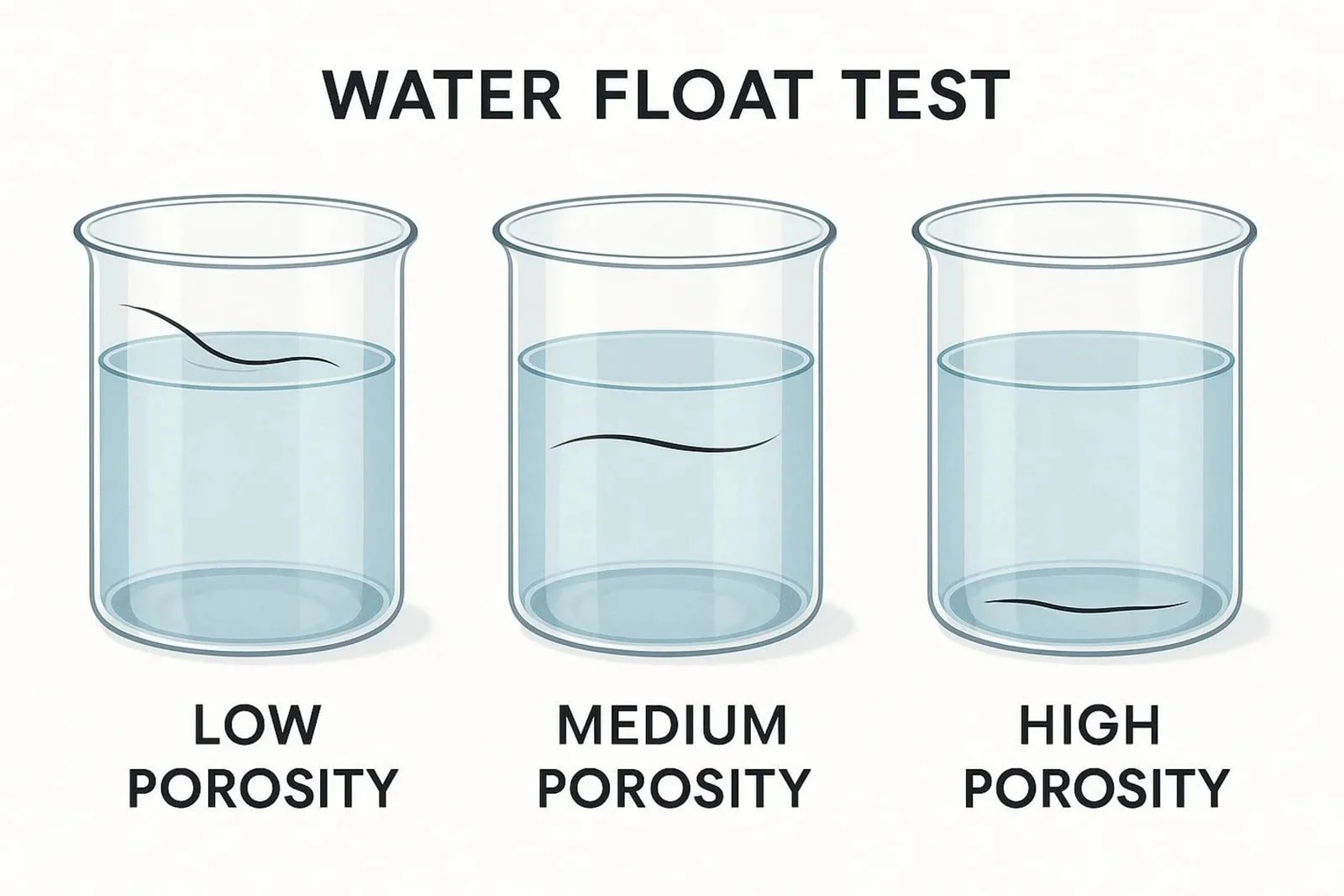Understanding Hair Porosity and Why It Matters
Have you ever noticed that some people’s hair quickly absorbs products and water, while others' hair seems to resist them? Or maybe your friend’s hair dries quickly, but yours stays wet for much longer. The explanation for these differences often comes down to hair porosity. Hair porosity simply means how well your hair can take in and keep hold of moisture and nutrients. Knowing this key detail can greatly improve the way you take care of your hair, keep it properly hydrated, and boost its health overall.
If you deal with constant frizz, product build-up, or want to get the best out of your conditioners and treatments, learning about hair porosity can make a big difference. It connects your hair products to their results and helps you make better choices so your hair gets what it really needs.
What Is Hair Porosity?
Hair porosity is all about how well your hair can soak up and keep moisture. You can picture it like how much a sponge can absorb water-hair strands have small gaps that decide how easily water gets in and out. In science, porosity is the measure of empty space in a material, usually shown as a percentage. For hair, it’s all about how open the outer layer is.
This idea might seem complicated, but it’s actually simple once you know about the parts of a hair strand. Your hair’s porosity level affects how it takes in moisture, how hydrated it stays, and how well products work. Figuring out your own porosity level is one of the first steps to healthier hair.
How the Hair Cuticle Affects Porosity
Your hair’s porosity mostly depends on the cuticle, which covers the outside of each hair strand. This cuticle is made up of overlapping scales, much like roof tiles. The way these “scales” lie-flat or raised-determines how easily water and products can go inside.
If the cuticle is smooth and tight, hair tends to look shiny, feels soft, and holds onto moisture better. If the cuticle is rough or has spaces, your hair may lose moisture quickly, causing it to look dull and feel dry.
Porosity and Hair Texture
Porosity is about moisture movement in your hair, not its thickness or curl pattern. For example, curly hair often loses moisture faster than straight hair, because the cuticle layers aren’t always flat. Still, anyone can have a range of porosity levels, no matter their texture.
The main thing to remember: The more open the cuticle, the more easily water and products go in and out. This impacts how you should care for your hair for the best results.
Why Does Hair Porosity Matter?
Knowing your hair’s porosity isn’t just interesting trivia-it’s key to choosing the best hair care routine. Porosity controls how your hair takes in products, how long moisture lasts, and is a main reason for problems like dryness or frizz when neglected.
Understanding this helps you pick the right shampoos, conditioners, and oils. It also means you can change how often and how you apply products to get better results and healthier hair.
How Porosity Influences Moisture Retention
One of the most important things to know about porosity is how it changes your hair’s ability to keep moisture:
| Porosity Type | Cuticle Position | Moisture Absorption | Moisture Retention |
|---|---|---|---|
| Low | Flat/tight | Difficult | Good once absorbed |
| Medium | Looser, slightly open | Easy | Balanced |
| High | Very open or damaged | Very easy | Poor (loses moisture quickly) |
If your hair doesn’t keep moisture well, you may notice frizz, dryness, or breakage. Picking the right products based on porosity can help keep your hair feeling soft and healthy.
Porosity’s Role in Product Absorption
Low porosity hair often has products just sit on top because its tightly packed cuticle won’t let them in. Lighter, water-based products work better here.
High porosity hair soaks up all products quickly, but they often escape just as fast. Thicker creams, oils, and leave-ins help seal moisture in these cases.
Porosity, Hair Health, and Manageability
Porosity has a big effect on your hair’s health and how easy it is to style. When your hair has trouble holding moisture-whether it can’t take it in easily or loses it fast-it can get damaged, frizzy, or weak. High porosity hair can be especially easily damaged by the sun, heat, and chemicals.
Matching your routine to your hair’s porosity can help you avoid these problems and keep your hair looking and feeling better every day.
What Causes Differences in Hair Porosity?
Porosity isn’t set in stone for everyone. While you do get some traits (like porosity) from your family, it can also change because of things you do and things in the world around you. Knowing this helps you understand why your hair acts the way it does and what you can do to help it.
Genetics
Genetics decide your starting porosity-just like you inherit hair color and thickness, you can inherit how open or closed your cuticles are. If your parents have low porosity, there’s a good chance you will too. Even though you can’t change your genes, you can still work with your hair to keep it healthy.
Damage and Your Environment
Environmental factors can open up the cuticle and raise porosity level over time. The sun’s UV rays, strong wind, pollution, and harsh water can all rough up the hair surface. Physical actions, like brushing hard or swimming in chlorinated water, can also increase porosity.
Heat and Chemical Processing
Chemical treatments-like dyeing, bleaching, or straightening-open and change the cuticle, often making hair much more porous. Using heat tools (blow dryers, straighteners, curling wands) without protection also damages the cuticle, letting moisture in and out too quickly and leading to dryness and breakage.
What Types of Hair Porosity Are There?
There are three main porosity types: low, medium, and high. Each has different features and care needs. None is “best”-the key is knowing your own type and giving it the right care.
Low Porosity Hair
Cuticle Layer: Very tight and flat
Water Uptake: Water and products tend to sit on the surface
Behaviors: Slow to get fully wet or dry, prone to product build-up
Tip: Use lightweight, water-based products, and try using gentle heat to help them absorb.
Medium Porosity Hair
Cuticle Layer: Not too tight, not too open
Water Uptake: Absorbs and keeps moisture evenly
Behaviors: Easy to style, holds shape, takes a normal amount of time to dry
Tip: Maintain balance with regular hydration, light leave-ins, and occasional deep-conditioning.
High Porosity Hair
Cuticle Layer: Gaps and lifted areas
Water Uptake: Absorbs water and products quickly but loses them just as quickly
Behaviors: Dries quickly, frizzes easily, tangles, may feel rough
Tip: Use richer, thicker products to seal in moisture. Try to avoid too much heat or harsh treatments.
How Can You Test Your Hair’s Porosity?
Want to know your porosity? You don’t need special equipment. There are some simple at-home tests to help you figure it out. For the best results, use clean hair without any product on it.
The Water Float Test
Wash your hair to remove all product and oils.
Pick a few clean strands and place them in a glass of water (room temperature).
Watch what happens for the next 2-4 minutes:
If it floats, you likely have low porosity.
If it sinks quickly, it’s high porosity.
If it floats in the middle, it’s medium porosity.
The Slip ‘n’ Slide Test
Take a single clean strand of hair.
Hold it between your fingers and slide from the tip up toward the scalp.
If it feels smooth, your cuticle is tight (low porosity).
If it feels bumpy or rough, your cuticle is raised (high porosity).
Professional Assessment
For the most accurate results, a trained hairdresser or trichologist can check your hair (sometimes using a microscope) and give you advice based on a close look at your strand’s structure.
Are At-Home Tests Accurate?
Home tests like the float and slide methods are helpful but not always perfect. Other factors, like leftover product, can affect the outcome. Use more than one test, watch how your hair reacts to products, and check with a professional if you want a more precise answer.
Can Hair Porosity Change Over Time?
Even though your genes play a big role, porosity isn’t set for life. Things you do to or around your hair can change it. Being aware of this helps you make smart choices to protect or improve your hair’s health.
What Can Change Porosity?
Chemical Treatments: Dyes, relaxers, bleach, and perms open up the cuticle.
Heat Styling: High heat with no protection raises the cuticle.
Physical Damage: Brushing too hard, towel drying roughly, or tying hair tightly can all have an effect.
Environmental Factors: Sun, wind, pollution, or chlorinated pools make the cuticle rougher or weaker.
Age: Hair can naturally become more porous over time.
How to Keep Porosity From Changing
Reduce chemical treatments when possible, and use gentle products after them.
Limit heat styling and always use a quality heat protectant.
Handle hair carefully-use wide-tooth combs, pat dry with soft towels, and avoid rough treatment.
Wear hats outdoors, and rinse hair before and after swimming in pools.
Choose products that match your hair’s current needs and adjust them as required.
Common Mistakes and Myths About Hair Porosity
It’s easy to make mistakes or believe rumors about hair porosity. Here are some things people often get wrong:
Mixing Up Frizz or Dryness With Porosity
Just because hair is frizzy or dry doesn’t always mean it’s highly porous. Low porosity hair can be dry too, especially if products aren’t soaking in. Look at more than just one sign-test and observe your hair’s real behavior.
Overusing Protein or Heavy Oils
Many people use too many protein treatments or heavy oils, thinking more is better. Too much protein makes hair stiff and brittle-especially if it’s not really needed. Heavy oils can sit on low porosity hair, causing build-up instead of delivering moisture. Stick with lighter, water-based products unless your hair truly needs extra protein or thickness.
Thinking All Curly Hair Has High Porosity
Curly hair is more likely to have higher porosity, but not always. There are many people with curly hair and low or medium porosity. Straight hair can be highly porous too, especially if it’s been damaged. Make decisions based on your own hair type, not just its curl or texture.
Do you live in Sydney?
Get the perfect look at our salon – schedule your appointment now!
Our Services
Check Out Our Instagram
Check out our instagram
Check out our instagram and see our latest posts!
Check out our facebook
Check out our facebook and see our latest
posts!











